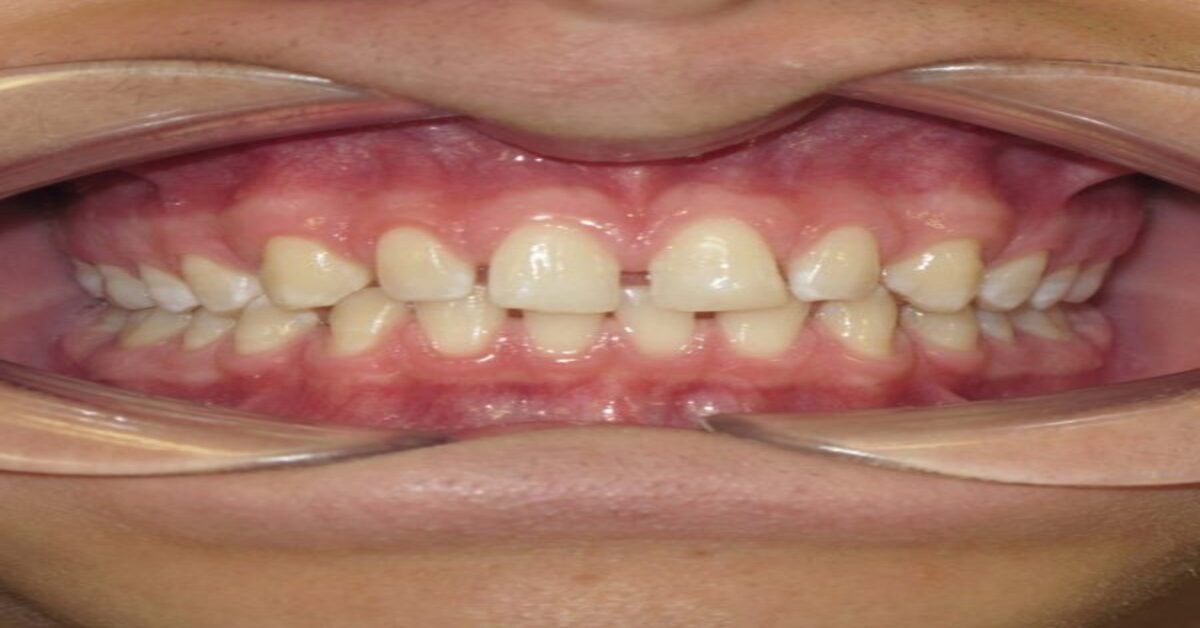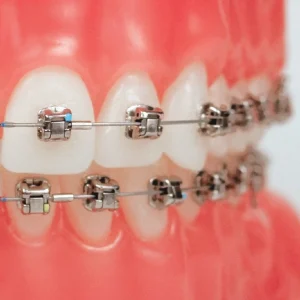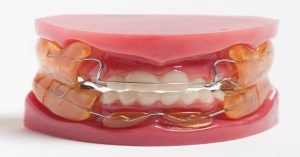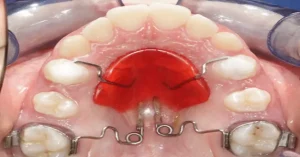- ✨ A midline diastema, commonly known as gappy teeth or gapped teeth, refers to an unwanted gap, typically between the two upper front teeth.
- ✨ A small gap can be seen as a unique style feature, but larger spaces can impact your oral health, speech, and confidence.
- ✨ At AQR Orthodontics, Dr. AQR specializes in diagnosing and treating spacing issues and guiding patients toward functional, confident smiles.
The Dangers of Gapped Teeth
A midline diastema, commonly known as gappy teeth or gapped teeth, refers to an unwanted gap, typically between the two upper front teeth. While a small gap can be seen as a unique style feature, larger spaces can impact your oral health, speech, and confidence. Picture trying to pronounce “s”—the air escapes through the gap, creating a noticeable lisp. At AQR Orthodontics, Dr. AQR specializes in diagnosing and treating spacing issues and guiding patients toward functional, confident smiles through customised plans.
Types of Dental Spacing
- Diastema is the clinical term for a space of ≥0.5 mm between teeth, most commonly seen between the upper front teeth, but gaps can occur anywhere in the mouth.
- Midline diastema refers specifically to the gap between the central incisors, often noticed soon after all adult teeth emerge.
- Generalised spacing means multiple gaps throughout the dental arch, typically due to small teeth, large jaws, or congenitally missing teeth.
- Localised spacing can be caused by missing, impacted, or extra (supernumerary) teeth—like mesiodens—which push others apart.
- In primary dentition, gaps typically reflect normal development, known as leeway space, which allows permanent teeth room to erupt properly.
- Persistent spacing in permanent teeth may indicate issues like oversized frenum, tongue thrust habit, periodontal problems, or developmental dental anomalies.
Uncovering the Root Causes of Spacing
Spacing between teeth can result from a variety of factors that affect how teeth align or erupt:
- Genetic jaw-tooth size mismatch: Inherited traits can cause jawbones to grow larger than the teeth, resulting in naturally wide spacing between teeth.
- Thumb-sucking or tongue-thrusting habits: Persistent pressure from sucking behaviours or tongue positioning during swallowing can push front teeth apart, creating gaps.
- Oversized labial frenum: Thick connective tissue between the upper lip and gums may extend too low, wedging between front teeth and preventing closure.
- Missing or impacted teeth: Absence or delay in eruption allows adjacent teeth to drift, causing spacing.
- Extra teeth (mesiodens): Supernumerary teeth in the upper arch can block normal eruption patterns and push teeth apart.
- Periodontal disease (gum disease): Loss of supporting bone weakens teeth stability, resulting in widened gaps.
Identifying the specific cause of spacing is essential for implementing the correct orthodontic or preventive strategy to restore healthy, aligned dentition.
Why Gaps in Baby Teeth Might Be a Good Thing
- Normal in baby teeth: Spacing in primary (baby) teeth is common and healthy. This natural spacing, including primate spaces and leeway space, helps accommodate larger permanent teeth and reduces future crowding.
- What is leeway space? It’s the extra room created when larger primary molars are replaced by smaller permanent premolars, averaging about 1.5 mm per side in the upper jaw and 2–2.5 mm per side in the lower jaw. Orthodontists often use this space to allow natural alignment of permanent teeth.
- Predictive value: Children with more than 6 mm of spacing in baby teeth often experience minimal crowding later, while those with less than 3 mm are more likely to develop crowding issues.
- When to watch: Gaps that persist after age 12—when most adult teeth should be in—indicate the need for an orthodontic evaluation to address spacing that won’t self-correct.
Beyond the Gap: How Dental Spacing Impacts Health and Confidence
Spacing isn’t just aesthetic—it can have far-reaching consequences:
- Dental Impacts
- Plaque build-up in open spaces boosts the risk of cavities and gum disease.
- Tooth migration into gaps over time may cause misalignment and bite problems.
- Functional & Speech Concerns
- Chewing inefficiencies due to food trapping in gaps.
- Speech issues, such as lisps or whistling sounds on “s,” “z,” “t,” “d,” and “ch.” Anterior gaps are a frequent cause.
- Aesthetic & Emotional Effects
- Self-consciousness and reduced smile confidence—even a small gap can affect how typically someone smiles or speaks freely.
Proven Treatments to Close Dental Spacing
- Preventive & Habit Interception
- Frenectomy: Removes the large frenum to allow gap closure.
- Habit appliances curb tongue thrusting or thumb-sucking in children.
- Functional / Interceptive
- Space maintainers or partial braces guide erupting permanent teeth into proper alignment.
- Braces & Clear Aligners
- Traditional braces apply controlled pressure to close spaces.
- Clear aligners (Invisalign, Spark) gently shift teeth to reduce spacing while offering aesthetic convenience.
- Cosmetic Dentistry
- For minor gaps:
- Bonding or composite resins—a quick chair-side fix.
- Veneers or crowns for larger spacing or shape adjustments.
- Periodontal & Prosthetic Care
- Treating gum disease before moving teeth.
- Dental implants or bridges for spaces from missing teeth.
Why Early Understanding Matters
- Maximises natural correction during key growth phases: Children’s jawbones are developing, making orthodontic guidance through appliances or expansion particularly effective. This can correct spacing issues organically before adult teeth emerge.
- Prevents long-term complications like speech issues and jaw strain: Gaps and misalignments left untreated can lead to functional problems, including lisps, inefficient chewing, temporomandibular joint (TMJ) strain, and related headaches.
- Simplifies and shortens treatment journey: Early orthodontic intervention often reduces the need for more invasive procedures—such as tooth extraction or surgery—resulting in fewer appointments, lower costs, and a quicker treatment timeline.
- Maintains aesthetic, functional, and oral health alignment: Addressing spacing early supports balanced facial development, improved oral hygiene, and renewed confidence in smiling—key factors in holistic patient care.
Natural Gap Closure with AQR Orthodontics in Dubai
- Expert care from a board-certified orthodontist located in Jumeirah, Dubai, with a track record in gap correction using natural methods for space closure.
- Digital 3D scanning and treatment planning for precise gap analysis and predictable results—no goop impressions, just comfort and clarity.
- State-of-the-art technology including digital imaging and clear aligners for comfortable, esthetic spacing treatment.
- Personalized, patient-first approach combining advanced methods with empathy and multilingual support (English, Arabic, Hindi).
Transform your smile with confidence—choose the leading spacing treatment in Dubai at AQR Orthodontics.
Conclusion: Solutions for Every Smile
Gapped teeth may seem benign, but they can ripple into dental, functional, and emotional issues. Thankfully, modern orthodontics and cosmetic dentistry offer a full toolbox: shadowing natural growth, guiding eruptive changes, and correcting spacing issues with braces, aligners, surgery, or bonding.
At AQR Orthodontics, Dr. AQR provides personalised plans for spacing treatment in Dubai, ensuring each patient—from child to adult—receives the optimal balance of aesthetics, function, and oral health. Early evaluation sets the stage for a healthy, confident smile.
Book a consultation with us today to learn how spacing treatment can help you or your child smile freely—no gaps left behind.












